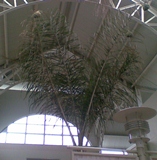PHOWN summaries and recordsVirtual Museum View records in Virtual Museum formatCoverage map for all species Species totals, Nest stats per species and Observer totals Species summary , or General query Observer records, or View VM record Photo of the week, or PHOWN repeats, or PHOWN priorities |
PHOWN record summary
|
Enter new vm record to see a different record and hit 'Go'.
|
Species allocated by Coordinator: Record details entered by participant: (see all records here for this participant) Google map for this record (zoom in and switch to satellite view)
Interactive map: S1 - termite nest
Best: White-winged Widow - termites taken over
Photos uploaded by observer

Large photos
814, White-winged Widowbird Euplectes albonotatus (see species summary here)Record status ACCEPTED Vm 19022 [on-line data upload (2016-03-17): 199317] Species White-winged Widowbird Observer(s) Engelbrecht GD Country, town, locus South Africa, Limpopo, Polokwane,
2329DCLocality Polokwane Nature Reserve in south-eastern corner Latitude, longitude -23.9775683283608, 29.5189440250397 [0 m accuracy] Date 2006/2/2 Notes I returned on about 2 February at which time the nest was deserted, still with 2 eggs in the nest, and completely fossilised by the termites.
[PHOWN 19021 - The nest had 4 eggs on 20 January but I noticed termites constructing from below.] Nest count 1 Nest site reed
To see this map with all other PHOWN records, click here. Note that the map on this page will load very slowly and probably will only work if you use Chrome as a browser.
History of repeat colony counts
Note: repeats from the same day are not shown.vm Species code Date Nests Notes 19021 814 20/1/2006 1 The nest had 4 eggs on 20 January but I noticed termites constructing from below.
[PHOWN 19022 - I returned on about 2 February at which time the nest was deserted, still with 2 eggs in the nest, and completely fossilised by the termites.] 19022 814 2/2/2006 1 I returned on about 2 February at which time the nest was deserted, still with 2 eggs in the nest, and completely fossilised by the termites.
[PHOWN 19021 - The nest had 4 eggs on 20 January but I noticed termites constructing from below.] 
Vm 19021
Vm 19022










